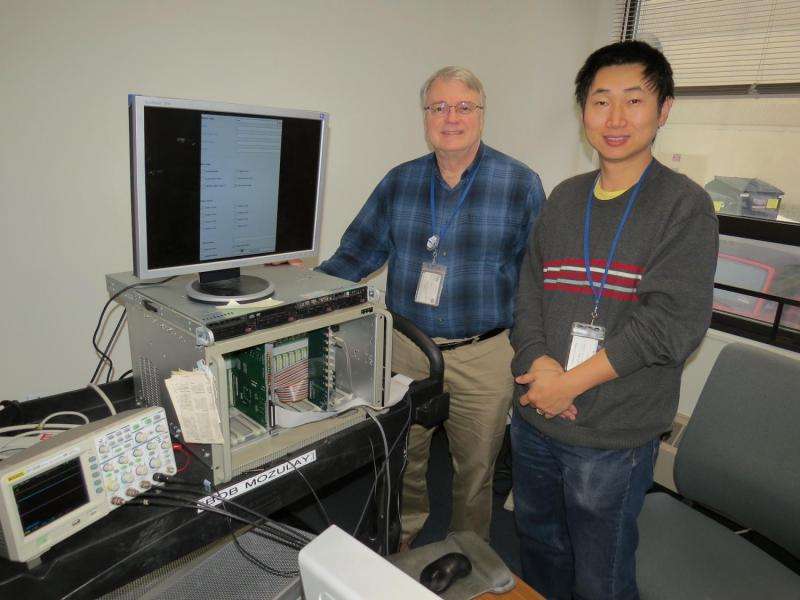Engineers build electronic component that manages plasma in upgraded fusion machine

PPPL engineers design and build state-of-the-art controller for AC to DC converter that manages plasma in upgraded fusion machine
The electric current that powers fusion experiments requires superb control. Without it, the magnetic coils the current drives cannot contain and shape the plasma that fuels experiments in doughnut-shaped tokamaks correctly.
Now, engineers at the U.S. Department of Energy's Princeton Plasma Physics Laboratory (PPPL) have developed an updated version of a key electronic component that helps regulate the current that powers the coils in PPPL's recently completed National Spherical Torus Experiment-Upgrade (NSTX-U). The device, known as a digital firing generator, replaces an analog device in the previous machine that was less accurate and harder to maintain.
This upgrade will bring NSTX-U in line with other tokamaks around the world that employ the same kind of device. The engineers Robert Mozulay, Weiguo Que, and Charles Neumeyer presented their results at the 26th Symposium on Fusion Engineering in June 2015. This work was supported by the DOE Office of Science (Office of Fusion Energy Sciences).
"The digital firing generator is very important for ensuring that NSTX-U operates effectively and reliably," Neumeyer said. These new generators extend the life of the power supplies that form the backbone of PPPL's electrical power system, and provide the precise control necessary to drive currents in the NSTX-U magnet coil up to 140,000 amps higher than any previous experiment at PPPL."
The ability to better manage the electric current flowing into NSTX-U, the world's most advanced spherical tokamak, will provide new insights into how to control plasma, the soup of electrons and charged atomic nuclei that swirl within fusion facilities. With better control, scientists will be able to perform experiments on NSTX-U to advance the design of a working fusion reactor.
The new generator links the computer that controls NSTX-U and a device called a "thyristor rectifier" that adjusts the voltage, and thus the current, for NSTX-U experiments. Through a computer command sent via fiber optic cables, the digital firing generator causes the AC (alternating current) that flows into PPPL to convert to DC (direct current) and deliver the amount requested for an experiment. The team also built the fiber optic links that make the conversion possible.
"A single thyristor rectifier can generate up to 2,000 volts of DC current at 24,000 amps, for about three seconds," Mozulay said. "That amount of voltage corresponds to 48 megawatts of power, which, during the three-second pulse, could power approximately 8,000 average-sized New Jersey homes."
NSTX-U has 32 pairs of thyristor rectifiers, each controlled by its own digital firing generator. These rectifiers help to double the heating power and magnetic field strength that the upgrade has made possible. "All of the firing generators were designed, built, and tested here at PPPL," Mozulay said.
Other advantages over their analog predecessors include a greater ability to coordinate the production of electric current and to shut down when sensing that a rapid change in current might damage components. This synchronized shut-off process is like applying the brakes in a car, Mozulay said.
Engineers will also be able to adjust the digital firing generators much more easily than their analog predecessors. "Making changes in the future will mean making changes to the programming, not electronics," Mozulay said. "A new program can be downloaded into the digital signal processors within the firing generators in minutes, thereby allowing fast, accurate updates."
Provided by Princeton Plasma Physics Laboratory




















